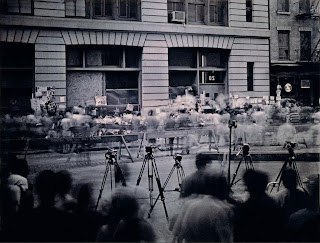



Above are some images from a two part series I completed last year about my relationship with my grandfather and my great-grandmother. When I was younger I used to travel with my grandfather to West Virginia to visit my great-grandmother up until she passed away when I was in high school. My grandfather now owns her house and I've visited it since she has past but I hadn't taken the time to look at it photographically. With this series I wanted to document and explore my great-grandmother's house and my relationship with it, her and my grandfather.
After completing a series of ten images, I noticed the strong reaction my grandfather had to the images and decided to use this to create a book. I started by giving my grandfather prints of the ten images and a tape recorder and asked him to tell me anything the images reminded him of. He talked about 5 of the images for a total of 2 hours. I then narrowed his comments down and created the hand made book you see above.




The statement Live to Ride, Ride to Live is one that most bikers come to live by, but at the same time most people who don’t ride don’t understand it. Growing up seeing and hearing my grandfather, my uncle and my dad take off or show up on there bikes I never really understood what riding meant to them. In June of last year, I started riding and quickly began to understand.
After riding about 6,000 miles in three months, I’ve started to notice a subculture that I had no idea was as big as it is. Everything from weekend riders to Hells Angels to Custom builders to part time bike mechanics and everything in between. And no matter how different the individuals are they are all tied together by the fact that they ride motorcycles. It’s intriguing for me to see the wide variety of people who ride and how outside of riding how different they can be. On top of the people being individuals this is shown even more in the bikes and all the custom parts riders add on to make it there own, like my father how I think would rather wash his bike instead of ride it sometimes.
I was interested in photographing this subculture to help myself and others understand it. I wanted to photograph individuals or small groups to show their depth into the motorcycle lifestyle and who they are as an individual shaped by this lifestyle.






















